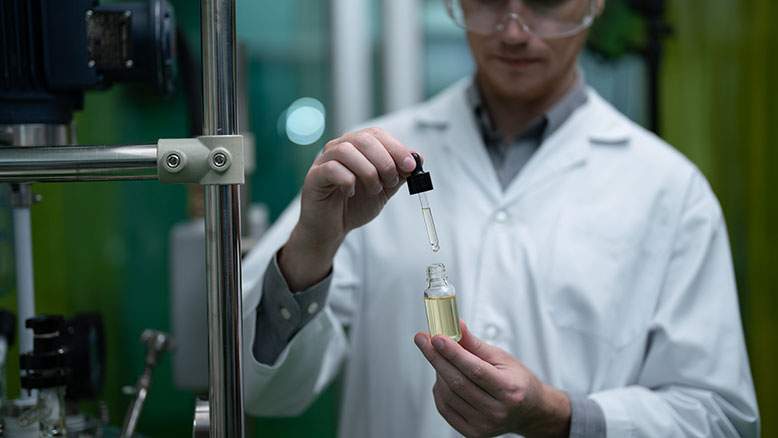Hemp: standardization work on track

When someone says “hemp” or “cannabis” to you, what comes to mind?
Not necessarily cannabidiol, the name behind the acronym CBD!
And yet it, and it alone, is available over the counter: you can consume it as an infusion, as a dry powder, in capsules or in bulk.
It can be applied to the skin in the form of massage oil, candy or vaporizer liquid… Present in the flowers and leaves of the flowering stems of the hemp plant, CBD is used to combat insomnia, anxiety and chronic pain.
However, products containing CBD cannot make therapeutic claims.
When it comes to CBD, the need for standardization came from the field, and in this case, from a trade association: the Union des industriels pour la valorisation des extraits de chanvre (UIVEC), which brings together SMEs and ETIs in the food supplements and cosmetology sectors.
Its president, Ludovic Rachou, has taken the helm of the technical committees set up at AFNOR to develop two voluntary standards: NF V38-001 (hemp: vocabulary) and NF V38-002 (methods for determining cannabinoids in hemp extracts).
When stores opened everywhere thanks to the lifting of regulatory brakes in 2019, it became clear that practices needed to be harmonized,” he relates. Until now, for example, if you sent your products to three different laboratories, you would get three different analysis results.
The detection and quantification of cannabinoids was random. ”
Harmonize vocabulary and detection methods
That’s how UIVEC first became interested in a practical guide (an AFNOR Spec), before finally opting for a standard from the NF collection, with a broader scope reflecting the general interest.
Ludovic Rachou continues: ” Public authorities are interested in this subject. And for manufacturers, the standard can be a real passport to export: it’s worth investing time and energy.
Many countries are looking into this, and we’d like to be one step ahead. . » Comme souvent en normalisation, la porte d’entrée chez AFNOR est donc la méthode d’analyse et de mesure. Ce fut le cas notamment des métaux rares ou encore des micro-plastiques dans l’eau. La future norme définira aussi une terminologie. Un grand classique, là encore : c’est une étape indispensable pour structurer une filière. ” The aim is to have a common language.
There are many trade names for different types of extraction “says president Ludovic Rachou.
UIVEC is also fighting for medical cannabis, which is not covered by the standard.
Defending French cultures
Ludovic Rachou and the working group set up by AFNOR believe that the future voluntary standard will be ” a development lever for their market”. ” Anything that goes in the direction of self-regulation shows the credibility and seriousness of an industry.
Using these tools really makes a difference.
We’re not a group of enthusiasts who publish white papers. “he defends.
In the background, the international stakes, first and foremost on the part of China, which is beginning to take an interest in the subject.
“It’s the magic of standards and negotiation,” says Ludovic Rachou, who can’t stop talking about them. Hemp and cannabis have been used for hundreds of years, for clothing or to weave boat ropes, hence the name of Marseille’s canebière.
Until the 1950s, the plant was included in the European pharmacopoeia. “Today, half of Europe’s production area is in France, i.e. 20,000 hectares. ” It’s a plant that grows in three months, without fertilizer, and storesCO2.
Its uses are likely to evolve rapidly “concludes Ludovic Rachou.
The standard is expected by the end of 2024.
In the same way as for electronic cigarettes, where French professionals asked AFNOR to take the lead, the future hemp standard should simplify life for professionals… and consumers.